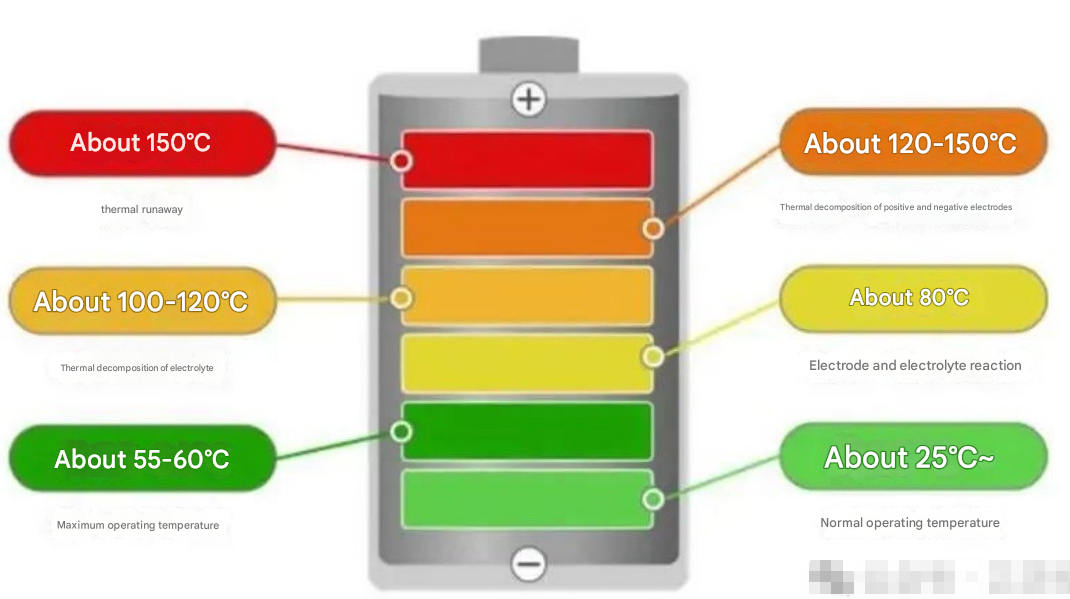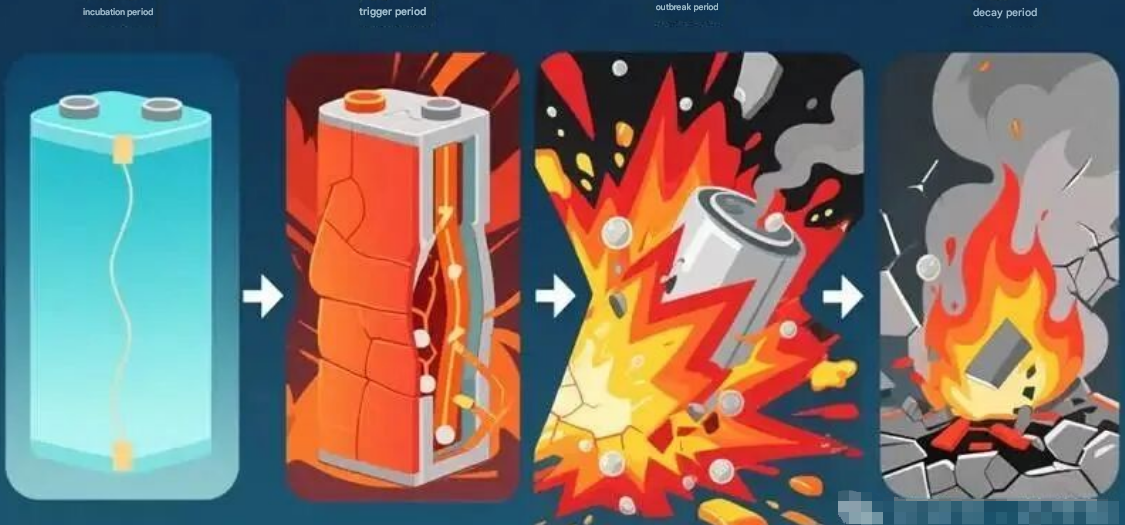
Thermal runaway in new energy batteries refers to the rapid release of energy and generation of excessive heat within the battery, caused by internal or external factors, leading to uncontrolled temperature increases. Thermal runaway is a cascading failure process in lithium-ion batteries, essentially an uncontrolled release of energy triggered by an electrochemical chain reaction, which can cause fire and explosion within a matter of seconds, posing a serious threat to the safety of passengers.

Stages and Characteristics of Thermal Runaway
(I) Latency Period
Characteristics: Internal short circuits or side reactions occur within the battery, causing a gradual temperature rise (to 60°C), and abnormal changes in voltage and capacity.
Key Reactions: Degradation of the SEI film (around 80-100°C), releasing small amounts of heat and gases (CO, H₂ etc.).
(II) Triggering Phase
Characteristics: Temperature rapidly rises to 100-120°C, the battery casing expands, and the electrolyte begins to decompose. Further temperature increase to 100-120°C leads to thermal decomposition of the positive and negative electrode materials.
Key Reactions: Oxygen is released from the positive electrode material (e.g., ternary material LiNixCoyMnzO₂), reacting with the electrolyte and releasing a large amount of heat (approximately 1000-2000 J of heat per gram of positive electrode material). Lithium intercalation in the negative electrode reacts with the electrolyte, producing flammable gases (CH₄, C₂H₄, etc.).

(III) Eruption Phase
Characteristics: Temperature exceeds 150°C, internal pressure rises rapidly, the battery casing ruptures, releasing high-temperature gases and molten materials, accompanied by flames.
Key reactions: Flammable gases mix with air and ignite, causing an explosion; the electrolyte continues to decompose, releasing flammable gases (CO, H2, etc.).
(IV) Decay Phase
Characteristics: Heat is gradually released, the flames extinguish, but the internal structure of the battery is completely destroyed, and smoldering may persist.
Share